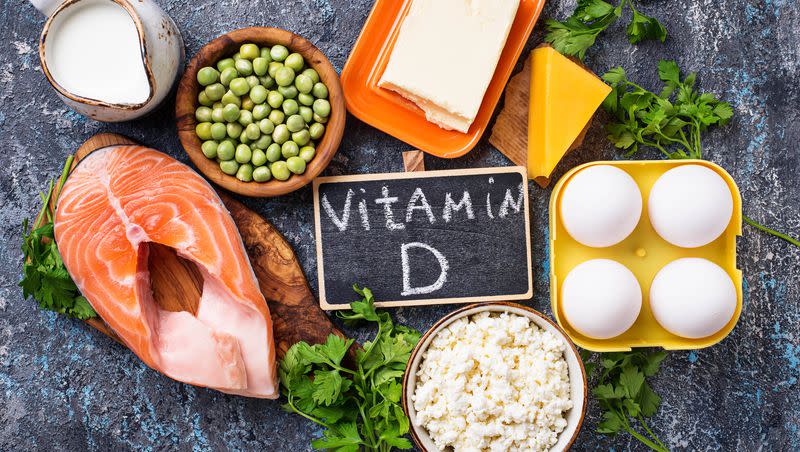A quick guide to vitamin C and D

When I was growing up, my dad used to carry vitamin C chewable tablets in his briefcase that tasted like candy. My mom would put clementines in my school lunch to fight off the seasonal cold going around the school.
I ate what my parents put in front of me so that I would “grow up healthy and strong.”
Now, as an adult, I have no one handing me orange-flavored vitamin C “candies” — and that’s just one vitamin our bodies need to thrive.
“Nutrient deficiencies exist extensively among many members of the U.S. population. Rich, poor, well, or sick — 92% of the population is suffering from at least one mineral or vitamin deficiency based on the Dietary Reference Intakes,” per Biostation.
If you’re like me and find yourself overwhelmed in the vitamin aisle of the grocery store, here are some tips from health experts on your body’s vitamin C and D needs.
Related
Consult a healthcare provider
Before adding a bunch of pills to your morning routine, it is important to speak with your primary-care doctor for specific recommendations based on which vitamins your body might be lacking.
The National Institute of Health recommends different amounts of vitamin C and vitamin D intake, depending on your health and sex.
Vitamin D intake based on age:
0-12 months — 10 micrograms.
1-70 years — 15 mcg.
Above 70 years — 20 mcg.
Vitamin C intake based on age:
0-6 months — 40 mg.
7-12 months — 50 mg.
1-3 years — 15 mg.
4-8 years — 25 mg.
9-13 years — 45 mg.
14-18 years — male: 75 mg; female: 65 mg.
19 and older — male: 90 mg; female: 75 mg.
Related
Sources of vitamin C
“Megadosing” on vitamin C is not uncommon, according to Harvard Health. The practice of taking vitamin C tablets and eating oranges when you get sick was spearheaded in the 1970s with a recommendation to eat the equivalent of 12 to 24 oranges to prevent illness.
Vitamin C is a “nutrient your body needs to form blood vessels, cartilage, muscle and collagen in bones. Vitamin C is also vital to your body’s healing process,” per Mayo Clinic.
Food rich in vitamin C is the best way to get your daily supplement:
Citrus fruits (oranges, grapefruit, lemons).
Tomatoes.
Strawberries.
Bell peppers.
Brussels sprouts.
Cauliflower.
“Serious side effects from too much vitamin C are very rare because the body cannot store the vitamin,” per Mount Sinai. “However, amounts greater than 2,000 mg/day are not recommended. Doses this high can lead to stomach upset and diarrhea, and rarely, kidney stones.”
Sources of vitamin D
“In the U.S. alone, 42% of adults are deficient, while 50% of children aged between 1 and 5 and 70% of children aged between 6 and 11 have low vitamin D stores,” per Healthmatch.
“Despite high rates, many people don’t know they are vitamin D deficient,” Healthmatch continues. “This is because the deficiency can mimic other conditions, and general tiredness and symptoms often appear many months or even years after you become deficient.”
Vitamin D’s primary role is to aid in the absorption of calcium from your digestive system. This essential mineral contributes to the ongoing process of strengthening your skeleton throughout your life, forming the dense bone structure that maintains your health and resilience, according to Yale Medicine.
Your body can intake vitamin D through food, supplements and the sun.
Since vitamin D is found in so few foods, Healthline recommends taking supplements to ensure you are getting the right amount of vitamin D.

